Identifying Nuisance Burrowing Wildlife
Scientific Classification
The majority of nuisance burrowing wildlife belong to the order of "Rodentia", and can therefore be considered "rodents" of some kind.
The order Rodentia accounts for over 40% of all mammal species and is the largest order of mammals. Common nuisance burrowing wildlife will usually fall within three or four families included in the order Rodentia.
Rats, mice and voles fall within the Muridae family. Squirrels, chipmunks, woodchucks and prairie dogs, the Sciuridae family. Pocket gophers, also known as "true" gophers belong to the Geomyidae family, and beavers are members of the Castoridae family.
In general, one of the most distinctive characteristics of a rodent are its incisor teeth, which grow continuously throughout their life, and must be kept worn down by gnawing.
Rodents that live above ground, can be quite a nuisance of course, as it relates to the damage they can do as a result of this desire to gnaw. Rodents that live underground have gnawing teeth as well, but they also bring an additional nuisance with them, with respect to the damage they can do - the destruction of your lawn and anything else that gets in the way of their digging, burrowing and underground travels.
However, not all nuisance burrowing wildlife are rodents, as a matter of fact, moles, bats and rabbits are not classified as rodents at all.
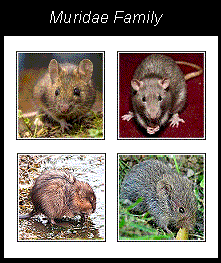
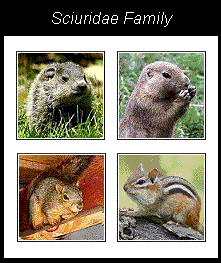
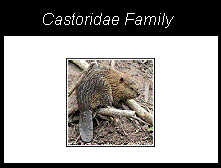
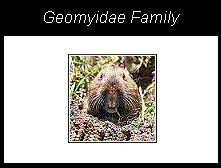
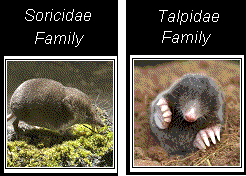
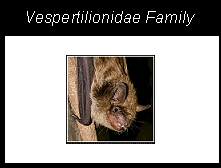
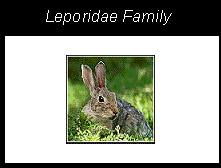
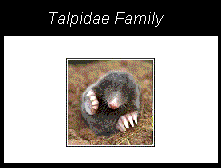
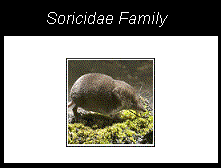
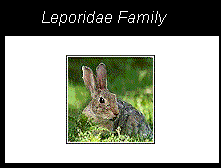

Understanding The Differences
Voles, moles and gophers (including groundhogs, pocket gophers and prairie dogs) are often lumped together in discussions regarding wildlife problems that result in torn up, damaged landscaping. This is because all 3 utilize tunnel systems and cause damage to plants, roots and beautiful lawns. Outside this similarity, they are very unique from each other.
Once problems start to occur, it can be difficult for property owners to identify which kind of burrowing wildlife is creating havoc around their property. For successful resolution of the problem, it will be important to correctly identify what species is causing the issues. Different animals require different methods, if the correct methods are not utilized, the attempts to solve your wildlife issues will be unsuccessful.
Crayfish Burrows
Crayfish, also known as crawdads and lawn lobsters, are not rodents, they are not even mammals. Crayfish are a crustacean related to the lobster. We thought it was important to mention them here because they will dig holes in the ground that are often mistaken for gophers, rats, snakes and other wildlife. So knowing how to identify a crawdad hole will help you know when to rule out other animals as the cause.
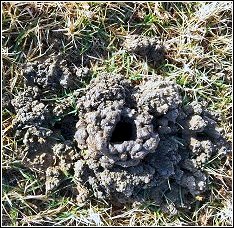
Crawdad holes, like the one above, are characterized by a "chimney" of mud wrapped around the opening and entrance to the hole. Crayfish need a moist environment to survive so these holes will always have the mud constructed look to them. The chimney can dry out however, so it may not always be muddy when you see it, but it will usually have that characteristic shape to it - unless something has destroyed or run over it.
Correctly Identifying Gophers,
Groundhogs & Prairie Dogs
Prairie dogs, gophers and groundhogs are all rodents, and all of them like to dig, creating burrows and tunnels. All three differ quite a bit in size, with gophers being the smallest, groundhogs the largest, and prairie dogs somewhere in between, similar in size to a rabbit.
The term "gopher" is commonly used in error to put the pocket gopher (true gopher), ground squirrel and prairie dog in the same category.
Although the three species may look similar to some, and are often mistakenly identified, prairie dogs, ground squirrels and gophers differ from one another in classification, behavior, physical characteristics, and sometimes habitat. So it will still be important to identify them correctly.
One difference to look for between prairie dogs and gophers is the tail. Prairie dogs have a bushy tail, like the one seen on the prairie dog in the photo immediately below, whereas a gopher's tail is usually hairless.
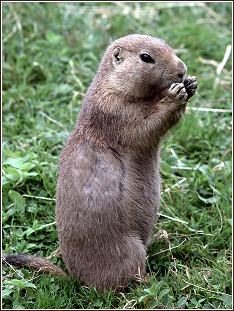
Prairie dogs are burrowing animals but they spend most of their active hours top side and will usually prefer to forage and eat above ground.
Gophers tend to like to stay below ground and will pull their food into their burrow to eat. So when you see an animal like the one shown above enjoying their food topside, there is less likelihood that it is a gopher.
A "true" gopher is also called a "pocket" gopher - they get their name from the fact that they have large pockets in their cheeks where they can store food, which comes in handy since they like to carry their food below ground before they consume it. Prairie dogs do not have these pockets.
Groundhogs, particularly younger, smaller ones, are sometimes misidentified by the non-professional as a gopher. However, groundhogs, also known as woodchucks and whistle pigs are substantially larger than their gopher counterparts, and like the prairie dog have fur on their tails.
The woodchuck in the photo below is a good example, notice its larger size, the fur on its tail and the fact that it is above ground.
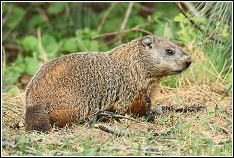
Groundhogs also live underground in burrows but tend to venture about making them visible on occasion, whereas pocket gophers stay below ground. Gophers tend to store their food for the winter, whereas woodchucks will gorge in order to build up a reasonable supply of body fat to help them get through the cold winter hibernation period.
Both animals have large teeth designed for chewing, gophers tend to have yellowish teeth, like those seen on the pocket gopher in the photo immediately below, whereas a woodchuck's teeth are whiter in color. Gophers are famous for their long teeth which rest on the outside of their lips enabling them to utilize their teeth to cut plant roots and shovel dirt without opening their mouths. When it comes to getting rid of nuisance wildlife, woodchucks are easier than gophers to control and remove.
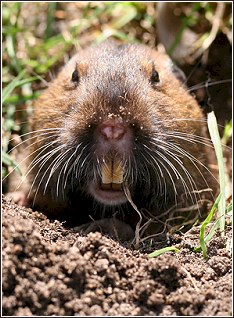
Of the three groups, the prairie dog is definitely the most social often banding together to support one another in endeavors of daily existence and survival - for instance, they help each other when it comes to maintaining food supplies, guarding against enemies, and even grooming. When compared to prairie dogs, groundhogs and gophers tend to be more socially isolated.
The Difference Between Shrews, Moles & Voles
Voles, also known as meadow mice, are often mistaken for moles because they sometimes utilize and live in the same tunnel system as moles. Voles, as seen in the photo immediately below, tend to be more mouse like in appearance than moles and voles have large, visible eyes, whereas a mole's eyes are very small and difficult to see.
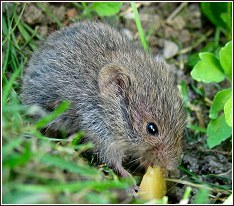
Vole tunnels and paths will continue on top of the ground and can be very easily seen after snow melts. Meadow mice will attack plant foliage above ground, and also consume roots. For the most part, the plant damage that is caused by moles is usually the result of the plants getting in the way of the mole's tunnel and being knocked over as the mole travels through the ground closer to the surface. Whereas, voles damage plants by eating away at the base, eventually causing them to fall.
A vole is basically a small field mouse and it looks like just that, a mouse. For the most part a vole actually looks nothing like a mole. As seen in the photo immediately below, moles have cylindrical bodies with large, clawed, paddle like forefeet with eyes and ears that are difficult to see. They also have slim, flexible and pointy noses, and short tails. The mole physique can be a little creepy to behold for some individuals, especially the star nosed mole which has a very strange, star shaped, nasty looking appendage on it's face. Moles will occasionally leave their tunnel in search of food sources or when flooding occurs, but primarily they live underground and can be difficult to catch a glimpse of sometimes.
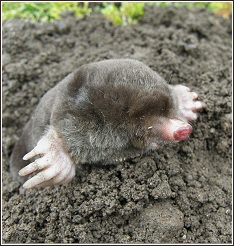
Shrews fall within the same classification order as moles, but are in a different family within it. Shrews are similar to both moles and mice in appearance, depending on which physical characteristic you are discussing. Like a mole, shrews have protruding noses, but their nose reaches more of a point than that of a mole. Shrews are smaller than moles, about the size of a small mouse, and their feet are not quite as large as a mole's either. Like a mole, the shrew's feet tend to be a bit paddle like in shape but compared to their body size, are closer in proportion to that of a mouse. Like the vole, shrews will utilize tunnels created by other wildlife such as moles or voles. Shrew's will venture above ground for food on occasion, whereas moles seldom do.

What's Causing The Holes In
Your Yard - A Gopher or A Mole?
It can sometimes be hard to determine if you have a gopher or a mole, especially since it is hard to get a glimpse of them. But you can look for subtle "above ground" clues. Gopher tunnels tend to be a little larger than a mole's, and gophers produce dirt mounds that wrap just about ¾ of the way around the hole, whereas a mole's dirt mound will usually wrap all the way around with a hole in the middle, as seen in the diagram below.
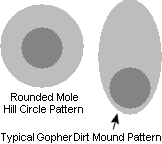
It is possible voles, little meadow mice, are behind the holes in your yard. Often, it takes a mole expert to tell the difference between vole and mole holes. There are some clues that can help you differentiate between the two. Moles primarily eat insects whereas voles and field mice enjoy plant life as well. Many times you can differentiate between a mole entrance and a vole entrance by looking at the blades and different pieces of foliage at the open opening of the hole. This means that if you find an open hole with grass wide ridges on top of the soil, you may be looking at a vole problem, not a mole issue. If you see plants near an open hole that have been chewed on, it may be damage done specifically by a field vole.
1242 SW Pine Island Rd., Suite 310
Cape Coral, Florida 33991-2126
help@totalwildlifecontrol.com














